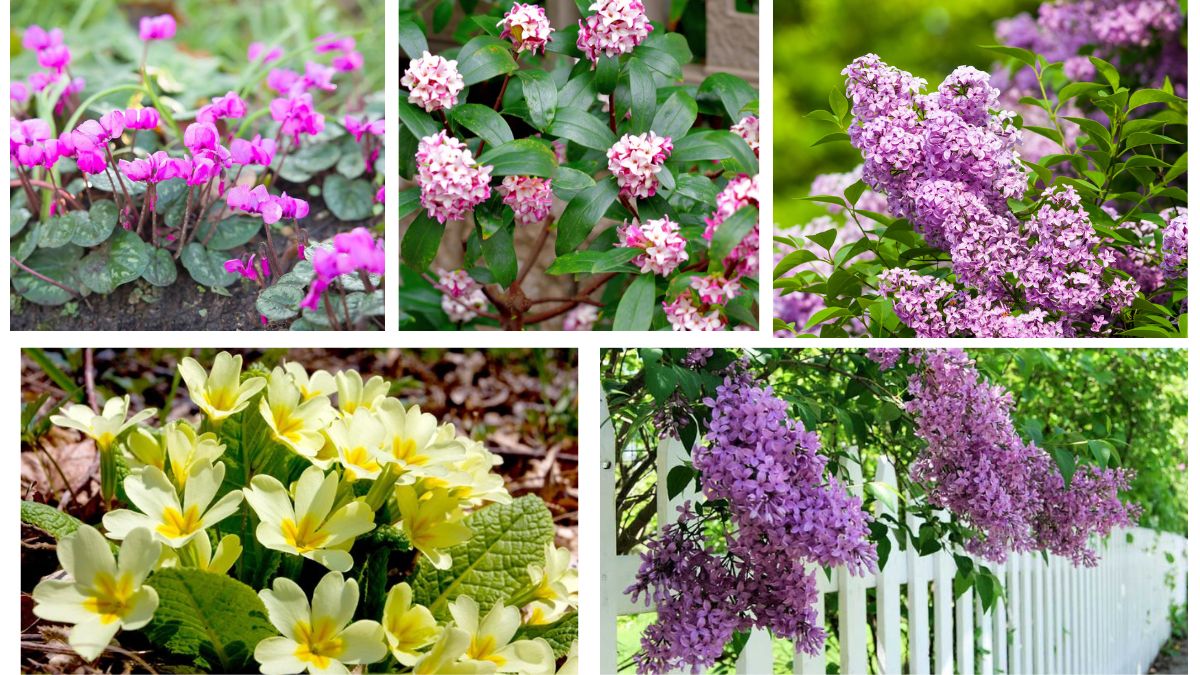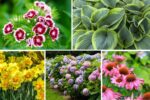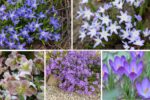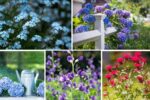When we think of winter, we often picture bare trees, dormant plants, and frost-covered gardens. But did you know that some remarkable shrubs defy the cold and burst into bloom during the winter months? These winter-blooming shrubs bring life, fragrance, and unexpected color to otherwise quiet and dormant landscapes.
If you’ve wondered, “Which shrubs bloom in winter?”, this article will introduce you to some of the most beautiful, cold-weather-defying shrubs that brighten gardens during the chilliest months. We’ll cover their characteristics, care requirements, and why they deserve a place in your winter landscape.
Why Add Winter-Blooming Shrubs to Your Garden?
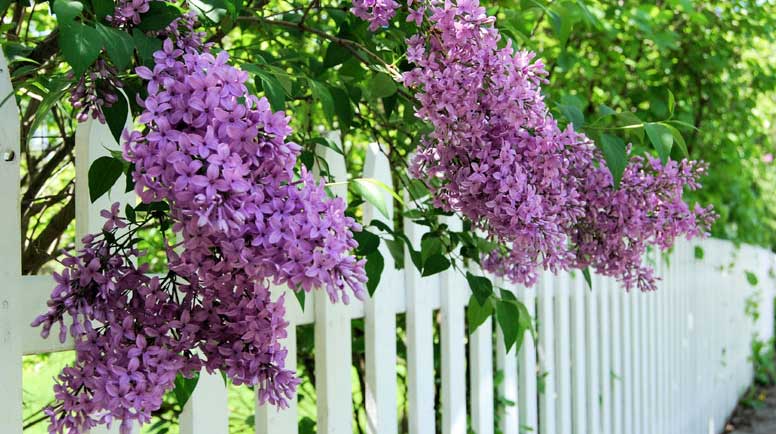
Including winter-flowering shrubs in your landscape offers several benefits:
- Provides color and fragrance when most plants are dormant.
- Attracts early-season pollinators like bees on mild winter days.
- Enhances garden structure with evergreen foliage and colorful flowers.
- Adds year-round interest and extends your garden’s blooming season.
- Combines well with evergreens and other winter-hardy plants for layered planting schemes.
Let’s discover the top shrubs that bloom in winter and how to grow them successfully.
Top Shrubs That Bloom in Winter
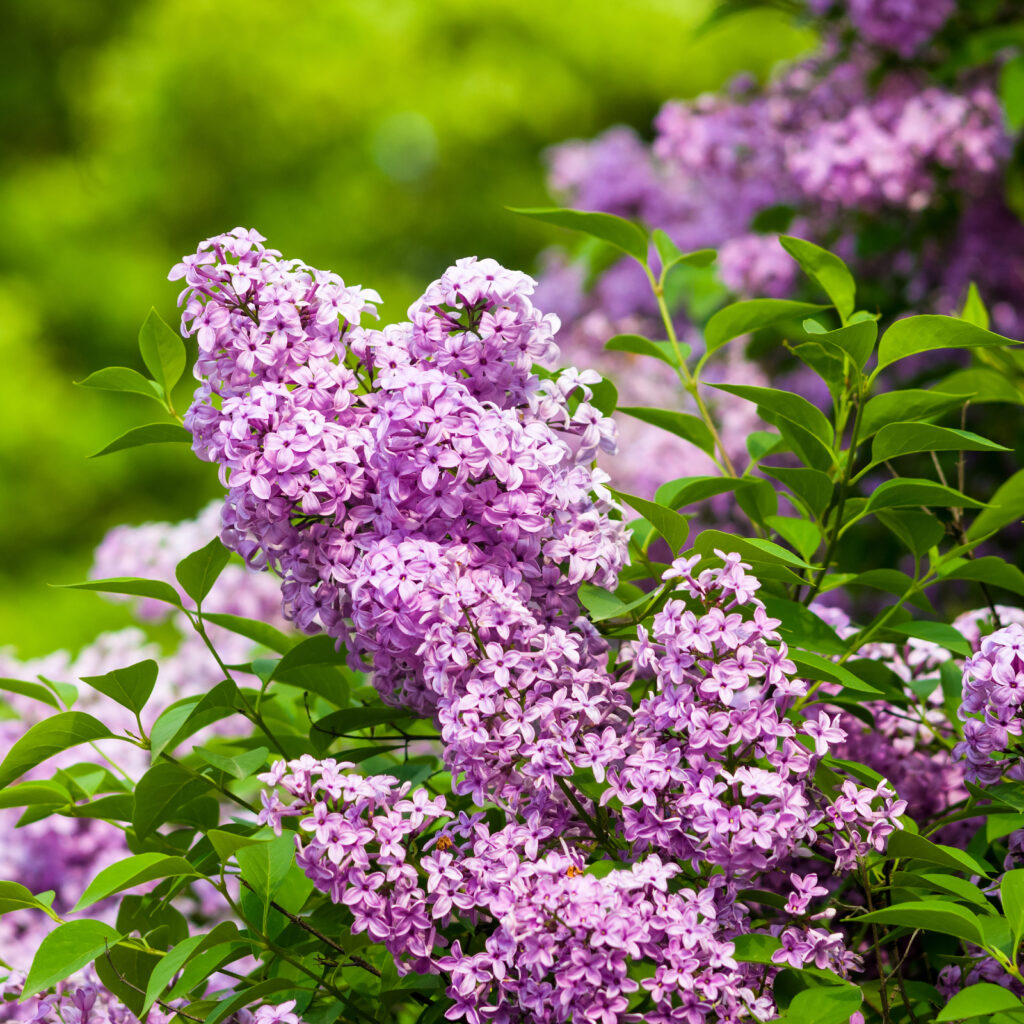
1. Camellia (Camellia japonica & Camellia sasanqua)
Bloom Time: Late fall to early spring (depending on variety)
Flower Colors: White, pink, red, and variegated
Growing Zones: USDA zones 7–9
Camellias are iconic winter bloomers prized for their glossy evergreen leaves and elegant rose-like flowers. Camellia sasanqua blooms in late fall and early winter, while Camellia japonica flowers from mid to late winter.
Care Tips:
- Prefers partial shade and acidic, well-drained soil.
- Protect from harsh afternoon sun and cold winds.
- Mulch to maintain soil moisture and temperature.
2. Witch Hazel (Hamamelis spp.)
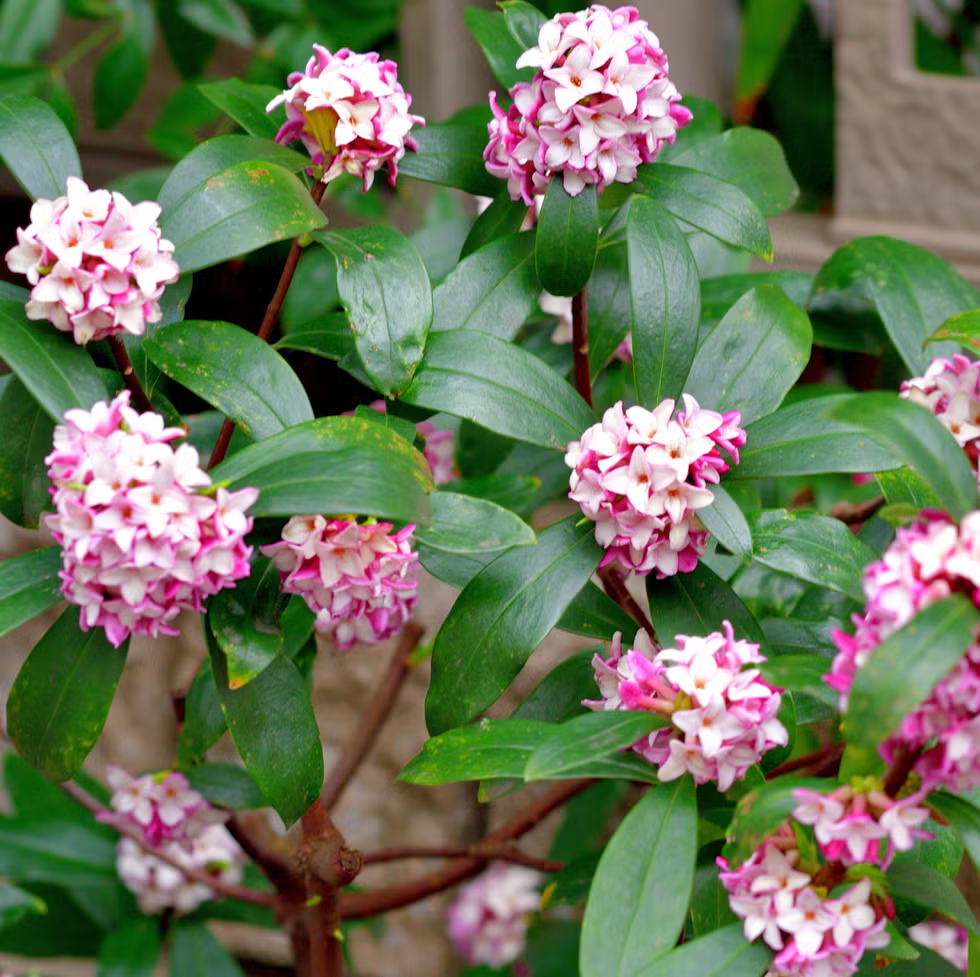
Bloom Time: Late winter to early spring
Flower Colors: Yellow, orange, red
Witch hazel is famous for its spidery, ribbon-like flowers that appear on bare branches before the leaves emerge. Their unique fragrance and cold tolerance make them a striking feature in winter gardens.
Care Tips:
- Plant in full sun to partial shade.
- Prefers moist, well-drained, acidic soil.
- Tolerates cold climates (hardy to USDA zone 3–9 depending on species).
3. Winter Daphne (Daphne odora)
Bloom Time: Late winter to early spring
Flower Colors: Pinkish-purple with white centers
Winter Daphne is renowned for its intensely fragrant flowers, which appear in tight clusters against glossy green foliage. It’s an excellent choice for planting near entrances or patios where its scent can be appreciated.
Care Tips:
- Prefers partial shade and well-drained, slightly acidic soil.
- Sensitive to overwatering; ensure excellent drainage.
- Hardy in USDA zones 7–9.
4. Mahonia (Mahonia x media)
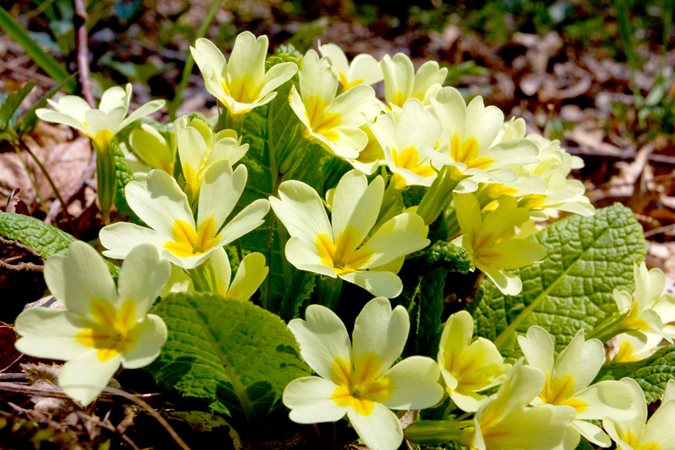
Bloom Time: Late fall to winter
Flower Colors: Bright yellow
Often called Oregon grape, Mahonia produces dramatic spikes of golden-yellow flowers in winter, followed by blue-black berries. Its spiny, holly-like leaves add texture and evergreen structure to winter gardens.
Care Tips:
- Thrives in partial to full shade.
- Prefers rich, moist, well-drained soil.
- Hardy in USDA zones 6–9.
5. Winter Jasmine (Jasminum nudiflorum)
Bloom Time: Late winter to early spring
Flower Colors: Bright yellow
Unlike true jasmine, Winter Jasmine isn’t fragrant but makes up for it with its cheery yellow flowers on arching, leafless stems in mid to late winter.
Care Tips:
- Grow in full sun to partial shade.
- Adaptable to a variety of soils with good drainage.
- Hardy in USDA zones 6–10.
6. Hellebore (Helleborus spp.)
Bloom Time: Late winter to early spring
Flower Colors: White, pink, green, purple, and speckled
Also known as Christmas rose or Lenten rose, Hellebores are tough, shade-loving perennials that act like shrubs in the garden. Their nodding flowers persist in winter, even through snow.
Care Tips:
- Prefers partial to full shade.
- Thrives in rich, moist, well-drained soil.
- Hardy in USDA zones 4–9.
7. Edgeworthia (Edgeworthia chrysantha)
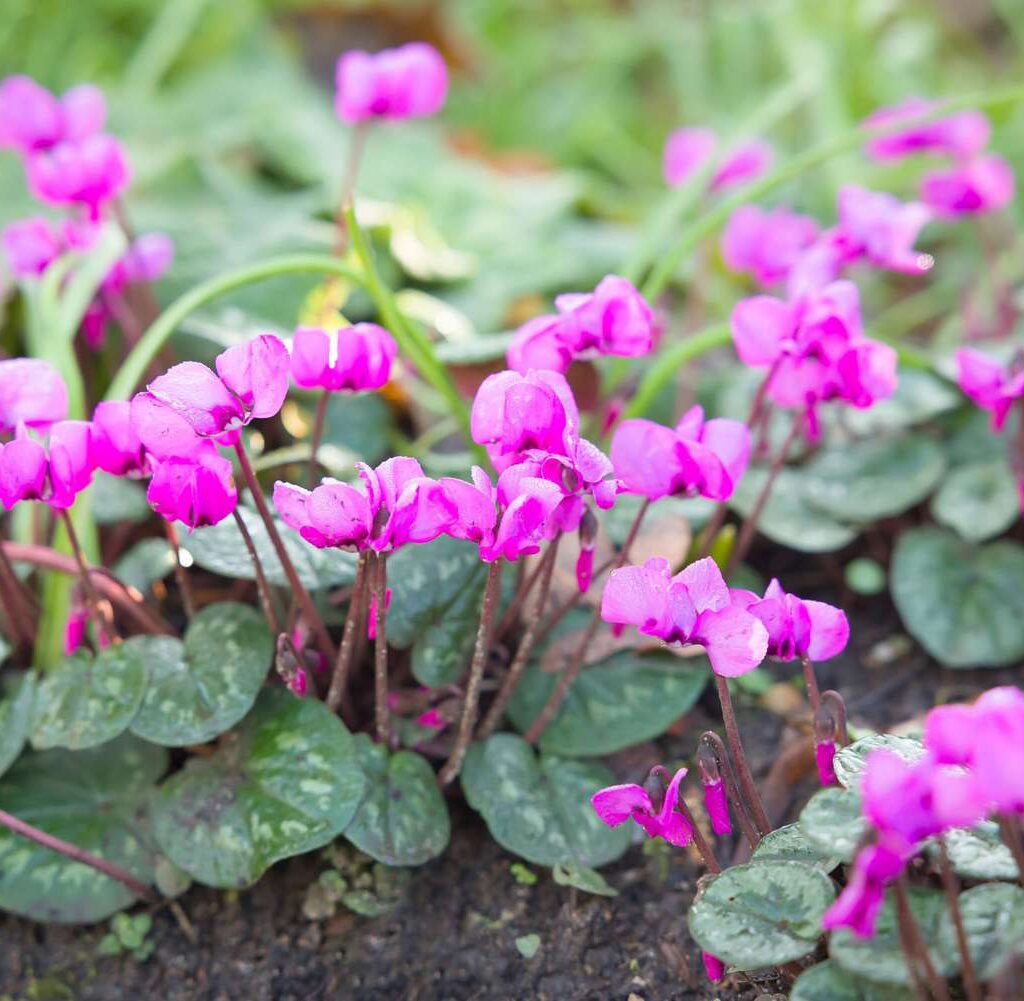
Bloom Time: Late winter to early spring
Flower Colors: Creamy yellow clusters
This lesser-known gem produces fragrant, ball-shaped clusters of yellow flowers on bare branches in late winter. It offers a tropical look with broad leaves in summer and elegant winter structure.
Care Tips:
- Best in partial shade and sheltered spots.
- Requires moist, rich, well-drained soil.
- Hardy in USDA zones 7–9.
8. Japanese Andromeda (Pieris japonica)
Bloom Time: Late winter to early spring
Flower Colors: White or pink
A compact evergreen shrub, Pieris japonica produces hanging clusters of bell-shaped flowers, resembling tiny lily-of-the-valley blooms. Its glossy leaves and red-tinged new growth add multi-season interest.
Care Tips:
- Prefers partial shade and acidic, well-drained soil.
- Mulch to retain moisture and protect roots.
- Hardy in USDA zones 5–8.
Planting and Care Tips for Winter-Blooming Shrubs
- Choose the Right Spot: Most winter bloomers prefer partial shade with protection from strong winds and harsh afternoon sun.
- Enrich the Soil: Improve soil with organic matter like compost or leaf mold for better drainage and nutrients.
- Mulch Well: Apply a 2–3 inch layer of organic mulch around the base to conserve moisture and regulate soil temperature.
- Water Regularly: Even in winter, new plantings need consistent moisture, especially during dry spells.
- Prune Thoughtfully: Prune after flowering to maintain shape and encourage healthy growth for the following year.
Combine Winter Shrubs for a Beautiful Cold-Season Display
For maximum impact, group different winter-flowering shrubs with varied textures, colors, and heights. Combine early, mid, and late winter bloomers to create a continuous display of color and fragrance.
Sample Combination:
- Edgeworthia for fragrant yellow blooms.
- Camellia sasanqua for long-lasting, rose-like flowers.
- Mahonia for dramatic, spiky flowers and berries.
- Hellebores to carpet the ground below.
Quick Reference Table: Winter-Blooming Shrubs
| Shrub Name | Bloom Time | Flower Color | USDA Zone |
|---|---|---|---|
| Camellia (Japonica & Sasanqua) | Late fall–early spring | White, pink, red | 7–9 |
| Witch Hazel (Hamamelis) | Late winter–early spring | Yellow, red, orange | 3–9 |
| Winter Daphne (Daphne odora) | Late winter–early spring | Pink, purple, white | 7–9 |
| Mahonia (Oregon Grape) | Late fall–winter | Yellow | 6–9 |
| Winter Jasmine (Jasminum nudiflorum) | Late winter | Yellow | 6–10 |
| Hellebore (Helleborus) | Late winter–early spring | Various | 4–9 |
| Edgeworthia (Paperbush) | Late winter–early spring | Yellow | 7–9 |
| Pieris japonica (Andromeda) | Late winter–early spring | White, pink | 5–8 |
Conclusion
While winter may seem like a quiet season for the garden, these extraordinary shrubs remind us that beauty can thrive even in the coldest months. By carefully selecting and planting winter-blooming shrubs like camellias, witch hazels, mahonias, and hellebores, you can bring color, fragrance, and vitality to your winter garden.
